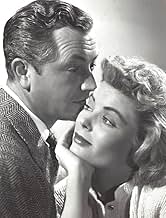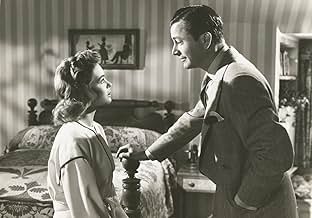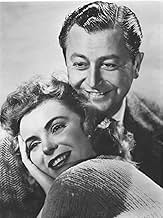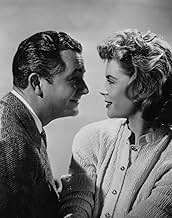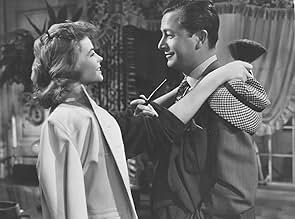The follow-up to the hit film "Claudia" (1943) finds the title character (Dorothy McGuire) and her husband David (Robert Young) dealing with the ups and downs of marriage and parenthood in t... Read allThe follow-up to the hit film "Claudia" (1943) finds the title character (Dorothy McGuire) and her husband David (Robert Young) dealing with the ups and downs of marriage and parenthood in their rural Connecticut town. Illness, accidents, and jealousy plague the young couple as t... Read allThe follow-up to the hit film "Claudia" (1943) finds the title character (Dorothy McGuire) and her husband David (Robert Young) dealing with the ups and downs of marriage and parenthood in their rural Connecticut town. Illness, accidents, and jealousy plague the young couple as they learn to weather life.
- Awards
- 2 wins total
- Farmer
- (uncredited)
- Mrs. Barry
- (uncredited)
- Charlie
- (uncredited)
- Mr. Riddle
- (uncredited)
Featured reviews
The comedy comes in the first 5 minutes. After that, it's high-class soap opera with an outstanding cast. Was there ever a more winning screen personality than McGuire or a more comfortable pipe smoker than Young. Together, they're nearly ideal. We know that despite their clichéd trials and tribulations, they'll emerge together in the end. Two scenes stay with me. When Young starts tickling wife on top their bed, we know what follows-- rather suggestive for the time. Still, it's done with such unforced naturalness and good humor, who could object. The other is the deeply felt confrontation between McGuire and Mrs. Dexter (Hobart). It's one of the more touchingly humane scenes of that period and stands as the movie's well-wrought centerpiece. All in all, this brief 73 minutes is a prime example of how effectively Hollywood could turn out slick little programmers during its illustrious studio period.
We watch Maguire as she reacts to Young's attentions to new neighbor Mary Astor. And Astor at this point could have woo'd the birds from the trees! This all takes place in suburban Connecticut. People are well off. They are professions -- architects, lawyers, doctors. The title couple have what appear to be live-in servants. But there are worms in the apple pie.
The sweet tone of the original "Claudia" is maintained. But shadows are added to it. It might seem to some a soap opera. To me it has the makings of a tragedy. With a few slightly different turns, it could have been -- and surely no one wanted it to be -- a film noir.
Claudia is still marching to her own, distant drum, but as a young mother, she's a tad more earthbound. And, as in "Claudia," she again gets a dose of reality that requires her to move up to an new level of maturity.
The original film must have been a great success, because this time, the actors are surrounded by more of a name cast: Mary Astor, John Sutton, Gail Patrick (replacing Jean Howard as David's sister-in-law), and Rose Hobart. Astor and Patrick really add some sophisticated glamor to the proceedings.
As with "Claudia," "Claudia and David" is style and characters over substance, i.e., there's not much of a story. Instead of being attached to her mother, now David is trying to get Claudia to relax about their son.
Also, at a party, a psychic (Jerome Cowan) gives her a message from her mother that David will have an accident when he travels, so Claudia tries to dissuade David from taking a business trip to California.
Definitely life was simpler then, and observing their country life, one can't help being a little bit jealous of Claudia and David. Entertaining with good performances.
Did you know
- TriviaThis 1946 sequel, three years after the original film, shows that the Connecticut farm now has electricity, but they drive the same old station wagon. Also, the telephone is no longer a party line as they don't count the number of rings before answering.
- Quotes
Claudia Naughton: What makes men think women are bad drivers?
David Naughton: Women drivers.
- ConnectionsFollows Claudia (1943)
Details
- Runtime
- 1h 18m(78 min)
- Color
- Aspect ratio
- 1.33 : 1



